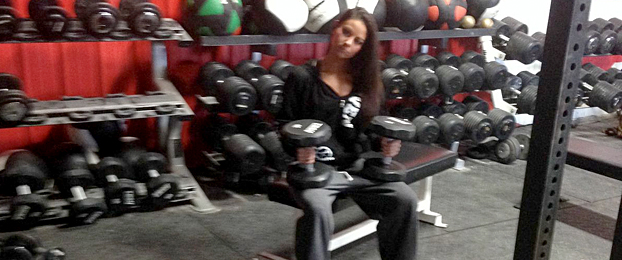
As an athlete, you’re taught many things—work hard, compete until the end, work together with your teammates, push yourself to the limit, and have fun. For over 15 years, I competed as a female athlete. I played soccer and basketball throughout middle school and high school and at the collegiate level. I learned all of those lessons. I worked hard until the very last second of each game, I pushed myself and my teammates during practice, I played while injured, I tossed water bottles and towels in disgust, I cried over tough losses and final games, I won title games along with my teammates, and I made some of the best friends I could ever have asked for.
I would never trade those experiences and moments for anything, but looking back now, I could have made my athletic career much better by making a few changes. As a strength and conditioning coach, my job is to keep young athletes healthy and increase their overall performance. When I was playing, my training programs were okay but not great.
Here are a few things I wish I knew as a high school and collegiate athlete.
1. Have a properly designed off-season plan
During high school, we pretty much just played summer league games and occasionally messed around at the gym. There was literally no focus or design for a sports performance program. College was a little better. We had a basic lifting program to follow as well as some speed work. None of the plans were designed to get us faster, more powerful, or keep us healthy. They were just generic lifting plans that we used and got stronger by default. Off-season programs should be anywhere from 4–5 days per week with progressive elements of strength, speed, power, flexibility, and recovery.
2. Lift with a purpose during the season
During the season, I tried to lift twice a week, so I was staying strong just by default. I wasn’t focused on injury prevention, prehabilitation movements, or recovery. In-season lifting should focus on strength and power maintenance as well as progressions to ensure that the athlete keeps getting stronger without overtraining.
3. Eat better foods more often and don’t eat less
As a female athlete in our current society, there is pressure to be “thin” instead of “healthy.” Many females do this by restricting calories and working out more. This hinders athletic and overall performance and can actually slow any weight loss (if it is needed at all). Female athletes need to focus on developing and maintaining lean muscle and fueling their bodies for competition. This is done by eating 5–6 small meals and snacks per day and drinking plenty of water.
4. Eat better foods
As a collegiate athlete, eating patterns are usually pretty horrible. Cafeterias have pretty decent selections though, and you have the ability to eat healthy. The hard part is not eating too many large portions and trying to avoid starchy carbs and weekend “beverages.” Fill up on lean meats, vegetables, fruits, whole grains, and water in order to keep the body fueled for competition.
5. Run less
I remember going for countless distance runs during college. I was a soccer player so I needed some aspect of endurance but not 3–4 miles worth. I fell into the trap of the typical female athlete wanting to stay thin and thinking that was the way to do it. I did some speed work, but I was running way too much and not giving my body any recovery time. Save the speed work and intervals for the off-season and keep your body healthy and strong during the season.
6. Listen to your body and to people smarter than you
During my sophomore year of soccer season, I suffered a compound fracture of my lower leg. I was in a cast for four months and missed basketball season. My doctor recommended physical therapy, but being a stupid 20-year-old, I didn’t do it. I did my own version of rehab, which could have been worse but it also could’ve been a lot better. I walked, built myself up to running, and swam. I met with the school’s athletic trainer a few times a week, but I should have gone every day. I worked on strengthening my leg, but I didn’t do it correctly. I build up my quad and ignored my hamstring. Now, my left ankle (injured side) has limited mobility, and my calf becomes tight on a regular basis. My right hip is tight from compensation, and my left stride is short. I should have taken more professional advice and not done it on my own.
With the advancement of athletics, strength and conditioning, and recovery tools available to today’s athletes, I do get a little jealous that we didn’t have that much structure in my day. Don’t get me wrong—I didn’t grow up in the dark ages (college graduate 2002). But it has gotten so much more advanced. I wouldn’t trade my athletic experiences for anything, but I can only imagine how good we could have been, how strong we would have felt, and how many silly injuries we could have avoided.
Elite Fitness Systems strives to be a recognized leader in the strength training industry by providing the highest quality strength training products and services while providing the highest level of customer service in the industry. For the best training equipment, information, and accessories, visit us at www.EliteFTS.com.








